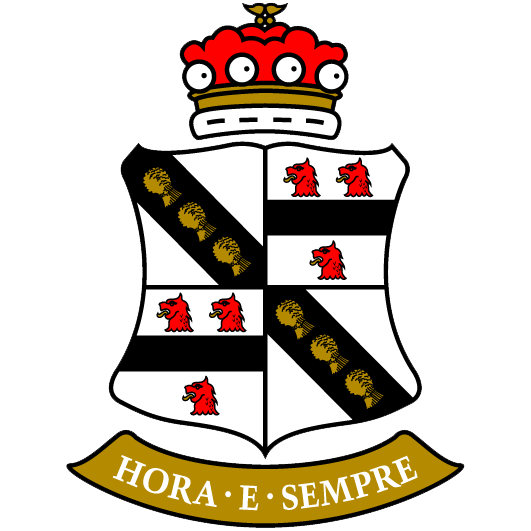Introduction: In the sport of greyhound racing, the trap draw plays a significant role in determining a dog’s starting position. Depending on the country, a greyhound race can have various numbers of runners.
Number of Runners in Greyhound Race
- England and Ireland: Races are limited to six dogs. Historically, five and eight dog races were also conducted.
- America, Australia, and New Zealand: The maximum number of runners is eight. There were instances where nine and ten dog races took place in the past.
English Graded Racing
In English graded racing, the trap draw is allocated according to Racing Manager Rule 76. The allocation process focuses on three types of runners:
- Railer (R): Inside runners are issued a ‘rails tag’ and seeded rails. The first railer drawn always occupies the first available inside trap position.
- Middle tracker (M): These runners are given a ‘middle tag’ and seeded middle. They now occupy the first available position placed next to the nearest inside runner, due to a recent change in procedure.
- Wide runner (W): Wide runners are given a ‘wide tag’ and seeded wide. The first wide seed drawn always occupies the outside trap position. Only in extremely rare cases, such as when there are six wides in a final or handicap race, a wide racer occupies the inside box.
Open Race (OR) Trap Draw Procedure
Under the new GBGB (Greyhound Board of Great Britain) equal distribution Rule 80, the procedure for Open Race trap draws involves three separate draws:
- Unseeded Runners Draw: Previously known as railers, unseeded runners are drawn first. The first unseeded runner drawn goes in the inside box of Heat 1, the second in the inside box of Heat 2, and so on.
- Middle Seeds Draw: The middle seeds are drawn next.
- Wide Seeds Draw: The wide seeds are drawn last.
Greyhound Racing: Altering Natural Racing Line and Race Seeding
The world of greyhound racing is filled with strategic decisions and actions that impact race outcomes. One such decision lies in altering a greyhound’s natural racing line, or its seeding position, which can significantly influence its performance. This adjustment often occurs following the dog’s initial trial at a track.
Changing Seeding Position
Initial Trials: When a greyhound is first trialed at a track before a competition, it may not adhere to its natural racing line, causing it to run the track differently.
Request for Position Change: If this occurs, with the owner’s permission, the trainer may request a change in the dog’s seeding position from the racing manager.
Granting of the Request: The change is only granted if there is a genuine belief that the dog would improve its performance if allowed to start future races from a different trap position.
Purpose of Race Seeding
While a change in seeding can enhance a dog’s performance, the primary motivation behind race seeding is, I believe, fundamentally rooted in maintaining safety. It serves the following purposes:
- Promotes Clean Racing: Ensures cleaner, trouble-free greyhound racing by reducing the potential for collisions or mishaps on the track.
- Maximizes Performance: By providing a safer racing environment, it allows the greyhounds to perform to the best of their abilities without the hindrance or distraction of potential safety issues.
| Key Consideration | Description |
|---|---|
| Initial Trials | Greyhounds may deviate from their natural racing line when first trialed at a track. |
| Request for Position Change | If the dog runs the track differently, the trainer may, with the owner’s consent, request a change in the dog’s seeding position. |
| Granting of the Request | The request is granted if it is thought that the dog would perform better in a different trap position. |
| Promotes Clean Racing | Race seeding aims to ensure safer and cleaner greyhound racing. |
| Maximizes Performance | A safer racing scenario allows greyhounds to perform at their peak ability. |
In this framework of racing, an optimal seeding position is crucial in allowing the greyhound to execute its race strategy effectively and safely. Notably, careful consideration is applied to these decisions, safeguarding the welfare of the dogs while also enhancing the quality of the race.
The Role of the Box Draw in International Greyhound Racing
In countries such as Ireland, America, Australia, and New Zealand, the process of determining a greyhound’s starting position is quite different from that in moderated countries. These nations’ racing divisions do not use seeding. Instead, they rely on “the luck of the box draw” to assign positions randomly.
No Seeding: A Key Difference
- Universal Approach: There is no preferential treatment or specific starting positions given to greyhounds based on their racing styles.
- Random Draw: Race outcomes are heavily reliant on the box draw, which assigns starting positions to the greyhounds at random.
Factors Affected by Box Draw Luck
The box draw can significantly impact race results and various other aspects, making it crucial to take it into consideration. Some of these factors are:
- Strategy Implementation: The success of a greyhound’s race strategy can be influenced by the assigned starting position.
- Greyhound Performance: How well the dog runs the track may be affected by its position in the box draw.
- Race Outcomes: Overall, the random nature of the box draw can influence the results of races in these countries.
In summary, the different greyhound racing systems in Ireland, America, Australia, and New Zealand place a strong emphasis on the role of luck when it comes to the box draw and starting positions. As a key factor in determining race outcomes, the box draw holds a prominent position in shaping a greyhound’s racing experience in these countries.
Assessing Greyhound Performance Based on Trap Positions
To make informed decisions when predicting winners in greyhound racing, it can be helpful to conduct private trials. These trials allow you to observe the impact of varying starting trap positions on a greyhound’s performance. Additionally, understanding the potential advantages of specific trap positions, such as those adjacent to vacant traps, can offer valuable insights.
Conducting Private Trials
- Purpose: Evaluate how different starting trap positions may affect a greyhound’s performance.
- Process: Perform individual trials, placing a greyhound in varying starting positions to observe potential changes in performance.
Analyzing Trap Positions
Good Draw Theory: The common belief when betting on dogs is that a runner drawn next to a vacant trap has a better draw. This is due to the following factors:
- Increased Racing Room: More space to maneuver early in the race, leading to an improved chance of starting well.
- Reduced Risk of Interference: Less likelihood of clashes with other competing dogs, enhancing overall performance.
However, it is crucial to consider the individual characteristics of each race:
- Race Make-up: The composition of competing dogs may influence trap position advantages in each event.
- Greyhound’s Running Style: A dog’s specific running style could determine how beneficial a trap position may be.
It is important to remember that predicting winners in greyhound racing may require assessing multiple factors, including conducting private trials and evaluating trap position advantages. By diligently analyzing race make-up and the greyhounds’ running styles, bettors can make more educated decisions when selecting potential winners.
| European, Irish & UK Dog Jacket Colours | Australian Dog Rug Colours | American Greyhound Blanket Colours | New Zealand Greyhound Rug Colours | |
|---|---|---|---|---|
| Trap 1 | Red | Red | Red | Red |
| Trap 2 | Blue | Black/White Stripes | Blue | Black/White Stripes |
| Trap 3 | White | White | White | White |
| Trap 4 | Black | Blue | Green | Blue |
| Trap 5 | Orange | Yellow | Black | Yellow |
| Trap 6 | Black/White Stripes | Green | Yellow | Green |
| Trap 7 | Green | Black | Green/White Stripes | Black |
| Trap 8 | Black/Yellow | Pink | Black/Yellow | Pink |
| Trap 9 | – | Green/White Stripes (Reserve Runner) | White/Purple (Reserve Runner) | Green/White Stripes (Reserve Runner) |
| Trap 10 | – | Red/White/Blue (Reserve Runner) | – | Red/White/Blue (Reserve Runner) |




